CXCL8 secreted by immature granulocytes inhibits WT hematopoiesis in chronic myelomonocytic leukemia
- PMID: 39545419
- PMCID: PMC11563679
- DOI: 10.1172/JCI180738
CXCL8 secreted by immature granulocytes inhibits WT hematopoiesis in chronic myelomonocytic leukemia
Abstract
Chronic myelomonocytic leukemia (CMML) is a severe myeloid malignancy with limited therapeutic options. Single-cell analysis of clonal architecture demonstrates early clonal dominance with few residual WT hematopoietic stem cells. Circulating myeloid cells of the leukemic clone and the cytokines they produce generate a deleterious inflammatory climate. Our hypothesis is that therapeutic control of the inflammatory component in CMML could contribute to stepping down disease progression. The present study explored the contribution of immature granulocytes (iGRANs) to CMML progression. iGRANs were detected and quantified in the peripheral blood of patients by spectral and conventional flow cytometry. Their accumulation was a potent and independent poor prognostic factor. These cells belong to the leukemic clone and behaved as myeloid-derived suppressor cells. Bulk and single-cell RNA-Seq revealed a proinflammatory status of iGRAN that secreted multiple cytokines of which CXCL8 was at the highest level. This cytokine inhibited the proliferation of WT but not CMML hematopoietic stem and progenitor cells (HSPCs) in which CXCL8 receptors were downregulated. CXCL8 receptor inhibitors and CXCL8 blockade restored WT HSPC proliferation, suggesting that relieving CXCL8 selective pressure on WT HSPCs is a potential strategy to slow CMML progression and restore some healthy hematopoiesis.
Keywords: Cytokines; Hematology; Leukemias; Neutrophils.
Conflict of interest statement
Figures
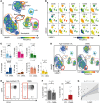

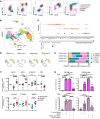
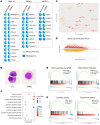
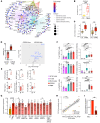
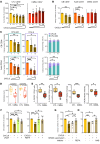
References
MeSH terms
Substances
LinkOut - more resources
Full Text Sources

